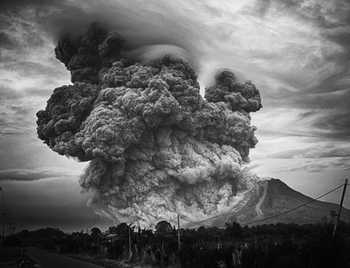Identifying and combating the growing scourge of counterfeit PPE in the age of COVID-19
Anything that can produce a margin can be counterfeited. From diapers to dandruff shampoo, and media to medication, making and selling counterfeit goods is a global business.
The scale of that business is immense. The global value of counterfeiting approached $1.2 trillion by 2017, and is projected to reach more than $1.8 trillion in 2020. Remarkably, a study from the U.S. Government Accountability Office (GAO) found that more than one in four consumers has purchased non-genuine goods online, and that approximately 40 percent of all brand name products purchased online through third-party retailers were counterfeits.
Personal Protection Equipment (PPE) is no exception to the problem of counterfeiting. Seeking to capitalize on the soaring global demand for PPE in the midst of the novel coronavirus pandemic, scammers are pivoting to counterfeit PPE. Brands, businesses and individuals all stand to be harmed by this practice, with results ranging from significant financial losses to genuinely tragic consequences. Given the current public health context, counterfeit PPE isn’t just a matter of dollars and cents, but an illegal practice with profound health and safety implications. In other words: it’s not just livelihoods, but lives that are at stake.
It’s critical that companies educate themselves about how to identify potentially counterfeit goods, avoid PPE scammers, and protect their employees and businesses from the harm that can result from using unregulated, unsound and unsafe protective equipment.
The pitch
Scammers are becoming increasingly savvy and sophisticated about communicating with potential targets in order to market and sell diverted, fraudulent, or even nonexistent products. From fake websites, to phishing emails that imitate a known or reputable vendor, to social engineering-based efforts that include proactive communications with businesses and healthcare institutions claiming affiliation with an existing supplier or third-party vendor, there is no shortage of ways that bad actors are trying to get a foot in the door.
The proliferation of e-commerce sales channels makes it even tougher to be confident that you are purchasing the genuine article, as online opportunities allow scammers not just the means to sell fraudulent goods at scale, but also the cover of the many legitimate operations that do conduct business online. You can usually trust a national brand, but there are no guarantees. Goods purchased directly from that business are almost certainly legitimate, but with items coming from a third party that is simply using the business as a conduit, you need to exercise caution.
Warning signs
So what are the warning signs that a supplier might not be legitimate, or that the PPE equipment you are considering might be counterfeit?
- Unusual terms. Is the seller asking for a lot of cash up front? Anything outside the usual procurement process should raise red flags.
- Changes in pricing. Any last-minute price changes (often attributed to “high demand”) should be viewed with skepticism.
- Unexpected or unusual delays. Any delays in the supply chain (especially last-minute delays or obstacles) could be a sign of trouble.
- Lack of resume. Any reputable seller will have plenty of verifiable references to share. Questionable or nonexistent references are concerning.
Best practices
Recognizing the common warning signs of counterfeit PPE and bad actors is obviously a critical first step. But companies and healthcare institutions can avoid a lot of problems before they start by adopting research and acquisition best practices that include:
- Exercise healthy skepticism. If it seems too good to be true, it almost always is. Promises of a huge volume of product, inexpensive equipment, or unusually fast delivery should all be viewed with a critical eye—especially at a time when the supply chain for PPE is so strained.
- Do your research. Some basic research about the individual and the institution selling PPE can uncover a significant number of scams. If someone claims to be representing a company based in California, but they are selling out of Ohio, that’s a red flag.
- Go to the source. Make sure you know where the product is coming from. If the sourcing is suspect, proceed with caution.
- Examine supporting documentation. Look closely: while many scammers are smart, and they do a good job of making instructions and other documentation look legitimate at first glance, few have the inclination or ability to forge documents that will stand up to close scrutiny.
- Tug on the supply chain. Reach out directly to manufacturers when possible to make sure you’re working with an approved distributor.
Take inventory
When reviewing samples, studying images, or simply examining PPE you have already acquired, there are certain key indications that your equipment might be suspect:
- Questionable packaging. Counterfeit packages tend to be generic, with little if any points of reference. Misspellings are common, graphic elements may be misaligned, and the packaging may be missing key information like lot numbers, manufacturer’s information or other details.
- Poor quality or inconsistency. The product might look “off,” with things like misaligned stitching, shoddy construction, or inconsistency from one product to the next.
- Atypical design elements. A faceplate respirator with ear loops instead of the standard headbands, for example, could be a sign that it is a counterfeit product.
- Lack of certification. All NIOSH-approved respirators, for example, will always have one the following designations: N95, N99, N100, R95, R99, R100, P95, P99, P100. There should be an approval label on or within the packaging, as well as an abbreviated indicator on the product itself.
A valuable resource for identifying counterfeit PPE is the National Personal Protective Technology Laboratory, a specialized group within the CDC that has produced excellent materials and clear guidelines how to look out for potential counterfeits.
A long-term challenge
The reality is that while PPE are more accessible today than they were a few weeks ago, global supply chains remain extremely tight. If you are able to source large quantities of PPE (anything over 1,000 units in the U.S., for example), that is a warning sign in and of itself. Unfortunately, the problem isn’t going away anytime soon. Supply will be further constrained by hoarding, and it’s likely to be years before manufacturing catches up. Companies and institutions should be developing and refining their skillset now to stay ahead of the counterfeit curve, and to protect their people and their bottom lines in the months and years ahead.





